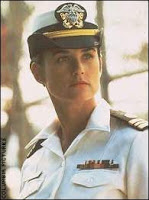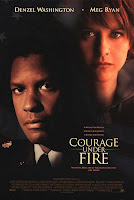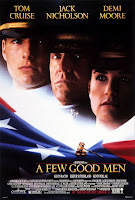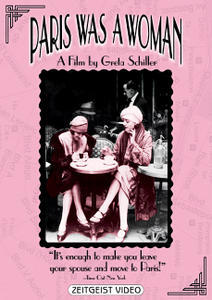Tag: Documentary
Reminder
Tune into your local PBS station tonight for the premiere of ARUSI Persian Wedding on Independent Lens.
Description from Women Make Movies:
For filmmaker Marjan Tehrani and her brother Alex, growing up Iranian-American has always meant being caught between two worlds. With unique perspective, intimate storytelling, and rich historical footage, Tehrani brings to life a compelling examination of U.S.-Iranian relations through the personal journey of her brother Alex and his fiancée Heather’s trip to Iran to hold a traditional Persian wedding. The young couple embark on an amazing trip, set against a fascinating history, in this heartfelt film that reveals a rare glimpse of Iran and its people beyond politics.
Update: My local PBS stations aren’t airing this tonight. If you can’t watch tonight, check tomorrow (Wednesday). If you do catch it tonight, leave your thoughts in the comments section.
Documentary Preview: Arusi Persian Wedding
From the Independent Lens website:
When the Tehranis are finally granted their Iranian passports, Alex, a photographer, and his American bride, Heather, an art gallery administrator, decide to make a trip from New York City to Iran to have a Persian wedding—just as Alex’s own Iranian father and American mother did in 1968, when Iran and the U.S. were still allies. But traveling to Iran is complicated. As the couple prepares to leave, they must face the mixed reactions of their parents and friends, reports of war in the Middle East, bureaucratic headaches and their own nerves. In ARUSI PERSIAN WEDDING, Marjan accompanies Alex and Heather and documents their journey on film.
From Women Make Movies, see the premiere of Arusi Persian Wedding on PBS’s Independent Lens on Tuesday, March 17th. Check your local listings.
A Few Good Women
In honor of Veteran’s Day, I thought I’d highlight female veterans and some movies featuring female soldiers.
The news about female vets has been plentiful as of late, and none of it particularly good or encouraging. More female veterans than ever are homeless, and government-sponsored housing is in short supply, according to the Air Force Times.
The homeless female veteran is a relatively new phenomenon because only recently have so many women — more than 190,000 in Iraq and Afghanistan alone — been serving in the military, said Todd DePastino, a historian at Waynesburg University who wrote a book on the history of homelessness.The number of homeless female veterans have gone up — from 3 percent of all homeless veterans a decade ago to 5 percent, the VA says.
“It’s a national embarrassment,” said Paul Rieckhoff, executive director of Iraq and Afghanistan Veterans of America.
Last March, Salon.com published an article titled “The Private War of Women Soldiers” about widespread sexual assault in the military, which has currently serving women refusing to leave their cots at night for fear of being raped on their way to the latrines. Columbia professor Helen Benedict also writes of the intensity of dealing with Post-Traumatic Stress Syndrome (PTSD) from combat and sexual assault.
Not everyone realizes how different the Iraq war is for women than any other American war in history. More than 160,500 American female soldiers have served in Iraq, Afghanistan and the Middle East since the war began in 2003, which means one in seven soldiers is a woman. Women now make up 15 percent of active duty forces, four times more than in the 1991 Gulf War. At least 450 women have been wounded in Iraq, and 71 have died — more female casualties and deaths than in the Korean, Vietnam and first Gulf Wars combined. And women are fighting in combat.
Officially, the Pentagon prohibits women from serving in ground combat units such as the infantry, citing their lack of upper-body strength and a reluctance to put girls and mothers in harm’s way. But mention this ban to any female soldier in Iraq and she will scoff.
“Of course we were in combat!” said Laura Naylor, 25, who served with the Army Combat Military Police in Baghdad from 2003-04. “We were interchangeable with the infantry. They came to our police stations and helped pull security, and we helped them search houses and search people. That’s how it is in Iraq.”
Women are fighting in ground combat because there is no choice. This is a war with no front lines or safe zones, no hiding from in-flying mortars, car and roadside bombs, and not enough soldiers. As a result, women are coming home with missing limbs, mutilating wounds and severe trauma, just like the men.
With the surge of women serving in the military, there doesn’t seem to be a correlative rise in female soldiers depicted in film. Here are a few movies featuring female soldiers. All plot summaries are from IMDb.
Courage Under Fire (1996)
The pilot of a rescue copter, Captain Karen Walden, died shortly before her helicopter crew was rescued after it crashed in Desert Storm. It first appears that she made a spectacular rescue of a downed helicopter crew, then held her own crew together to fight off the Iraqis after her copter crashed. LT Colonel Serling, who is struggling with his own demons from Desert Storm is assigned to investigate and award her the Medal of Honor. But some conflicting accounts from her crew and soldiers in the area, cause him to be question whether she deserves it. Written by Brian W Martz {B.Martz@Genie.com}
Rent Courage Under Fire from Netflix
In this dramatic courtroom thriller, Lt. Daniel Kaffee, a Navy lawyer who has never seen the inside of the courtroom, defends two stubborn Marines who have been accused of murdering a colleague. Kaffee is known as being lazy and had arranged for a plea bargain. Downey’s Aunt Ginny appoints Cmdr. Galloway to represent him. Also on the legal staff is Lt. Sam Weinberg. The team rounds up many facts and Kaffee is discovering that he is really cut out for trial work. The defense is originally based upon the fact that PFC Santiago, the victim, was given a “CODE RED”. Santiago was basically a screw-up. At Gitmo, screw-ups aren’t tolerated. Especially by Col. Nathan Jessup. In Cuba, Jessup and two senior officers try to give all the help they can, but Kaffee knows something’s fishy. In the conclusion of the film, the fireworks are set off by a confrontation between Jessup and Kaffee. Written by Matt Curtolo {curt@epix.net}
Rent A Few Good Men from Netflix
When a crusading chairperson of the military budget committee pressures the would be Navy secretary to begin full gender integration of the service, he offers the chance for a test case for a female trainee in the elite Navy SEALS commando force. Lt. Jordan O’Niel is given the assignment, but no one expects her to succeed in an inhumanly punishing regime that has a standard 60% dropout rate for men. However, O’Niel is determined to prove everyone wrong. Written by Kenneth Chisholm {kchishol@execulink.com}
Rent G.I. Jane from Netflix
The day after they get the word they’ll go home in two weeks, a group of soldiers from Spokane are ambushed in an Iraqi city. Back stateside we follow four of them – a surgeon who saw too much, a teacher who’s a single mom and who lost a hand in the ambush, an infantry man whose best friend died that day, and a soldier who keeps reliving the moment he killed a civilian woman. Each of the four has come home changed, each feels dislocation. Group therapy, V.A. services, halting gestures from family and colleagues, and regular flashbacks keep the war front and center in their minds. They’re angry, touchy, and explosive: can a warrior find peace back home? Written by {jhailey@hotmail.com}
Rent Home of the Brave from Netflix
 Lioness (2008)
Lioness (2008)
Lioness presents the untold story of the first group of women soldiers in US history to be sent into direct ground combat, in violation of official policy. Told through intimate accounts, journal excerpts, archive footage, as well as interviews with military commanders, the film follows five women who served together for a year in Iraq. With captivating detail, this probing documentary reveals the unexpected course of events that began with using US women soldiers to defuse tensions with local civilians, but resulted in the women’s fighting in some of the bloodiest counter-insurgency battles of the war. Together the women’s candid narratives and scenes from their lives back home form a portrait of the emotional and psychological effects of war from a female point of view. Lioness is the first film to bridge the gap between perception and reality of the role women in the military are playing in Iraq, capturing an historical turning point for American society.
Read an interview with filmmakers Meg McLagan and Daria Sommers.
_____________
Have we missed some good ones? Compared with the problems female vets face, most of these movies feel like token representations. Demi Moore actually won a Razzie for Worst Actress in G.I. Jane. I’ve left out the many depictions of female soldiers in science fiction films and TV shows (Starbuck from Battlestar Gallactica immediately comes to mind), perhaps unfairly. Tell us movies we’ve left out in the comments section.
‘One Woman, One Vote’: A Documentary Review
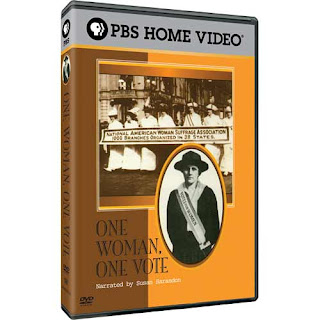 Seneca Falls. Susan B. Anthony. Elizabeth Cady Stanton. Alice Paul. Lucy Burns. Iconic American names that we recognize from our last history course, but often without knowledge of the full extent of their courage and suffering. The suffrage movement is one filled with small victories, setbacks, and defeats, and with men and women of often clashing ideas and ideologies.
Seneca Falls. Susan B. Anthony. Elizabeth Cady Stanton. Alice Paul. Lucy Burns. Iconic American names that we recognize from our last history course, but often without knowledge of the full extent of their courage and suffering. The suffrage movement is one filled with small victories, setbacks, and defeats, and with men and women of often clashing ideas and ideologies.
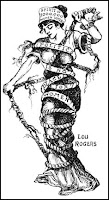 Women’s suffrage was a 72-year movement that finally attained nation-wide victory in 1920 with the ratification of the 19th constitutional amendment prohibiting sex discrimination at the polls. Up to this point, women met, organized, marched, fought amongst themselves, lobbied, and protested. They were threatened, ridiculed, attacked, beaten, tried, arrested, and placed in solitary confinement for their actions. In retaliation, they fought harder. They organized hunger strikes in prison. They surrounded the White House in protest, despite angry mobs of men who dragged them to the ground and tore not only their banners, but also clothing from their bodies.
Women’s suffrage was a 72-year movement that finally attained nation-wide victory in 1920 with the ratification of the 19th constitutional amendment prohibiting sex discrimination at the polls. Up to this point, women met, organized, marched, fought amongst themselves, lobbied, and protested. They were threatened, ridiculed, attacked, beaten, tried, arrested, and placed in solitary confinement for their actions. In retaliation, they fought harder. They organized hunger strikes in prison. They surrounded the White House in protest, despite angry mobs of men who dragged them to the ground and tore not only their banners, but also clothing from their bodies.
One of the more shocking discoveries I had from watching One Woman, One Vote was that women were not united in the cause of suffrage. There were a number of women who believed that politics were corrupt, and that women would only participate in the corruption, and sully their clean, domestic image, by voting. There was even strong disagreement amongst the suffragettes; they divided and formed separate groups on different occasions, opposing each others’ strategies and tactics for earning the vote, and finally unified when ratification of the amendment seemed inevitable. There were many diverse opinions and motivations driving the movement and its opposition, including racism, temperance, religion, and cultural norms.
 The documentary was made in 1995, but only the graphics seem dated (and, despite the fact that One Woman, One Vote is part of the PBS American Experience series, the film has no official website). Susan Sarandon narrates, and the film is full of varied voices, letters, film reels, photos, and cartoons. There are great clips of historic songs throughout, too, which are often funny, incisive, and scathing. I learned so much about a part of American and women’s history that is so often summarized into a single paragraph.
The documentary was made in 1995, but only the graphics seem dated (and, despite the fact that One Woman, One Vote is part of the PBS American Experience series, the film has no official website). Susan Sarandon narrates, and the film is full of varied voices, letters, film reels, photos, and cartoons. There are great clips of historic songs throughout, too, which are often funny, incisive, and scathing. I learned so much about a part of American and women’s history that is so often summarized into a single paragraph.
Here are a few highlights of the women who made the movement.
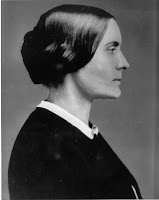 On November 5, 1872, Susan B. Anthony led a dozen women to the polls in Rochester, New York, and convinced the worker there to allow her and the others to vote—despite the fact that it was against the law. Four hours later, U.S. Marshals arrested and handcuffed Anthony. She was later convicted of a federal crime by an all-male jury–after being forbidden to testify on her own behalf (women were deemed incompetent to testify because of their sex). Before her sentencing, however, she was permitted a statement:
On November 5, 1872, Susan B. Anthony led a dozen women to the polls in Rochester, New York, and convinced the worker there to allow her and the others to vote—despite the fact that it was against the law. Four hours later, U.S. Marshals arrested and handcuffed Anthony. She was later convicted of a federal crime by an all-male jury–after being forbidden to testify on her own behalf (women were deemed incompetent to testify because of their sex). Before her sentencing, however, she was permitted a statement:
“In your ordered verdict of guilty, you have trampled underfoot every principle of our government: my natural rights, my civil rights, my political rights. I have been tried by law made by men, interpreted by men, administered by men, in favor of men, and against women. May it please, your honor, I shall never pay a dollar of your unjust penalty. Resistance to tyranny is obedience to God.”
 African American women were quite unified in their support of suffrage. However, mainstream groups were seeking the support of Southern Democrats, who strongly opposed suffrage for black women, and thus largely left black women out of their cause. Mary Church Terrell was one of the few black women invited to speak at national conventions, and there she urged white suffragists not to forget black women:
African American women were quite unified in their support of suffrage. However, mainstream groups were seeking the support of Southern Democrats, who strongly opposed suffrage for black women, and thus largely left black women out of their cause. Mary Church Terrell was one of the few black women invited to speak at national conventions, and there she urged white suffragists not to forget black women:
“Not only are colored women handicapped on account of their sex, they are everywhere mocked on account of their race. We are asking that our sisters of the dominant race do all in their power to include in their resolutions the injustices to which colored people are victims.”
Despite the efforts of Terrell and other African American leaders, they never enjoyed mainstream acceptance from the suffrage movement. Regardless, they organized and grew their supporters to half a million members, including active support from men.
 Elizabeth Cady Stanton, who first called for women’s rights at Seneca Falls (the right to vote was her most radical demand; the group met to call for property rights, divorce rights, and a woman’s right to her children), told her friend Susan B. Anthony that as she grew older, she grew more radical. Their relationship is widely considered one of the greatest relationships of the 19th century, and Stanton’s radicalism seems to be one of the few areas of disagreement–though it did not end their friendship. When Stanton was in her 70s, frustrated by women who still refused to join the suffrage movement, she denounced the church as responsible for the oppression of women.
Elizabeth Cady Stanton, who first called for women’s rights at Seneca Falls (the right to vote was her most radical demand; the group met to call for property rights, divorce rights, and a woman’s right to her children), told her friend Susan B. Anthony that as she grew older, she grew more radical. Their relationship is widely considered one of the greatest relationships of the 19th century, and Stanton’s radicalism seems to be one of the few areas of disagreement–though it did not end their friendship. When Stanton was in her 70s, frustrated by women who still refused to join the suffrage movement, she denounced the church as responsible for the oppression of women.
“The Bible teaches that woman brought sin and death into the world. I don’t believe that any man ever talked with God. The Bible was written by man, out of his love of domination.”
She rewrote every section of the Bible that degraded women, and published The Woman’s Bible, which was translated into six languages. The Woman’s Suffrage Association denounced the work, and rebuked Stanton. After her death, Stanton’s daughter, Harriet Blatch, led the movement.
 Alice Paul earned numerous academic degrees in her lifetime, and also served numerous prison sentences for acts of civil disobedience in her campaign for women’s suffrage. When she arrived in Washington in 1913, she was one of the few women in the United States who held a doctorate degree in political science. While in prison she led hunger strikes, and was tortured with forced-feedings:
Alice Paul earned numerous academic degrees in her lifetime, and also served numerous prison sentences for acts of civil disobedience in her campaign for women’s suffrage. When she arrived in Washington in 1913, she was one of the few women in the United States who held a doctorate degree in political science. While in prison she led hunger strikes, and was tortured with forced-feedings:
“Dear Mama,
The forcible feeding was terrible. They tied me to a chair because I struggled. One wardress sat astride my knees, two others held my arms and hands while two doctors forced a tube five or six feet long through my nose, like driving a stake into the ground.”
Rather than defeat her, the experience only made Paul more determined to devote her life to the suffrage movement. Among her many accomplishments were the organization of a parade that essentially upstaged the inauguration of newly-elected president Woodrow Wilson and caused a riot in the streets that brought out the U.S. Cavalry, and a “perpetual delegation” of women who picketed outside the White House, six days a week, in which women from all backgrounds stood silently with banners protesting the administration’s refusal to support a federal amendment to enfranchise women, and even outrageously mocking the president’s hypocrisy. Finally, police began to arrest the silent protesters, who were regularly being physically attacked, and charged them with obstructing traffic and imprisoned them–sometimes for months at a time.
The year was 1917. It took an additional three years for the 19th amendment to be passed and ratified by all of the states.
Remember the women who fought for women like us. We’ve only had the vote for 88 years. Exercise your right: Vote today.
Rent One Woman, One Vote from Netflix.
Purchase the DVD from PBS.
Documentary Preview: Generation M
From the MEF website:
Despite the achievements of the women’s movement over the past four decades, misogyny remains a persistent force in American culture. In this important documentary, Thomas Keith, professor of philosophy at California State University-Long Beach, looks specifically at misogyny and sexism in mainstream American media, exploring how negative definitions of femininity and hateful attitudes toward women get constructed and perpetuated at the very heart of our popular culture.
The film tracks the destructive dynamics of misogyny across a broad and disturbing range of media phenomena: including the hyper-sexualization of commercial products aimed at girls, the explosion of violence in video games aimed at boys, the near-hysterical sexist rants of hip-hop artists and talk radio shock jocks, and the harsh, patronizing caricatures of femininity and feminism that reverberate throughout the mainstream of American popular culture.
Along the way, Generation M forces us to confront the dangerous real-life consequences of misogyny in all its forms – making a compelling case that when we devalue more than half the population based on gender, we harm boys and men as well as women and girls.
Anyone seen this yet?
Update: You can watch the entire film–as a preview only–here.
Documentary Review: Paris Was a Woman
 |
| Paris Was a Woman (1996) |
Paris Was a Woman is a documentary about artists living in Paris during the time between the wars–specifically in the 1920s. Paris has always been a place for artists, but at this time, Prohibition, inexpensive living, and a general openness to different lifestyles and art made American women flock to the Left Bank area of the city. The film looks at Gertrude Stein, Alice Toklas, Colette, Djuna Barnes, Berenice Abbott, Gisele Freund, and Janet Flanner, among others.



